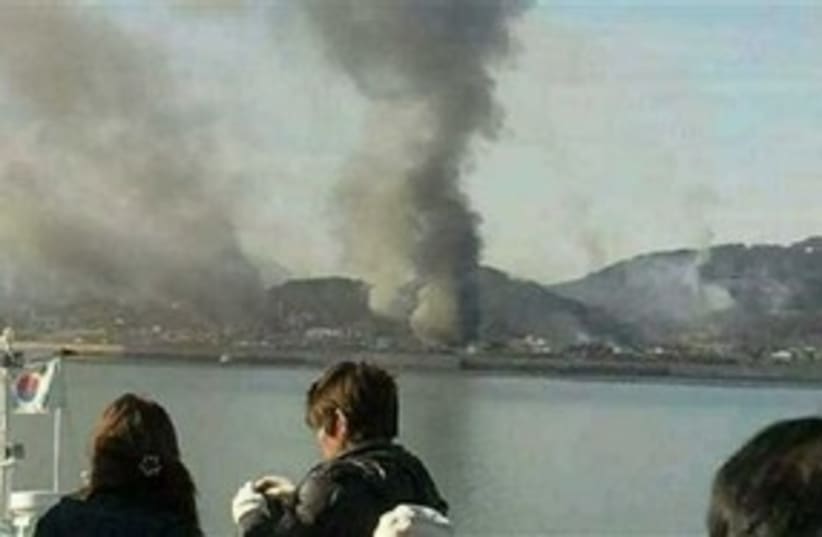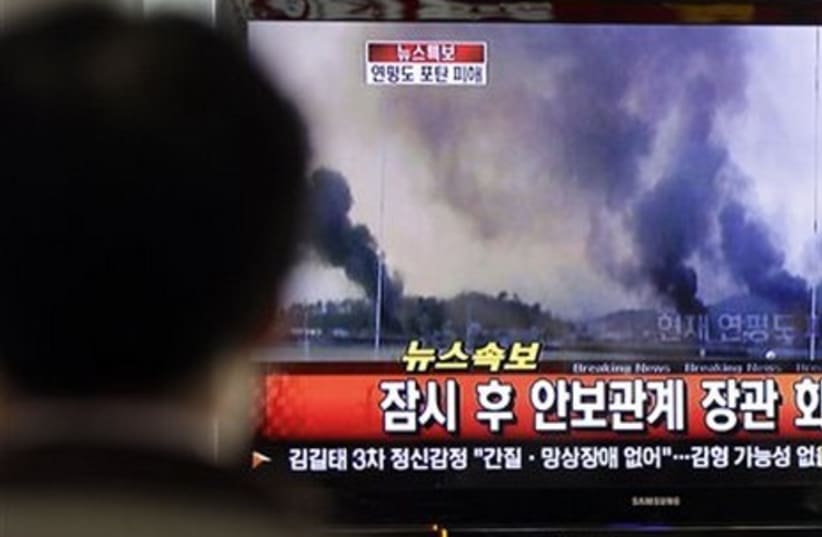
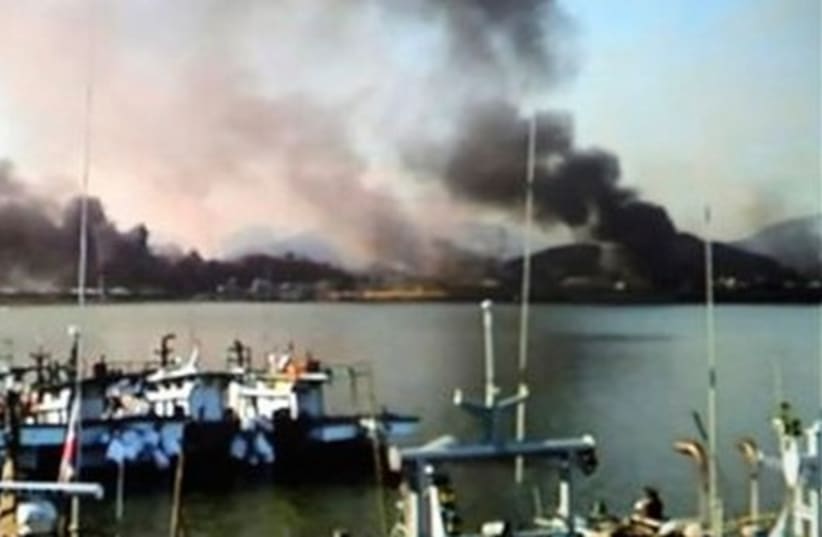
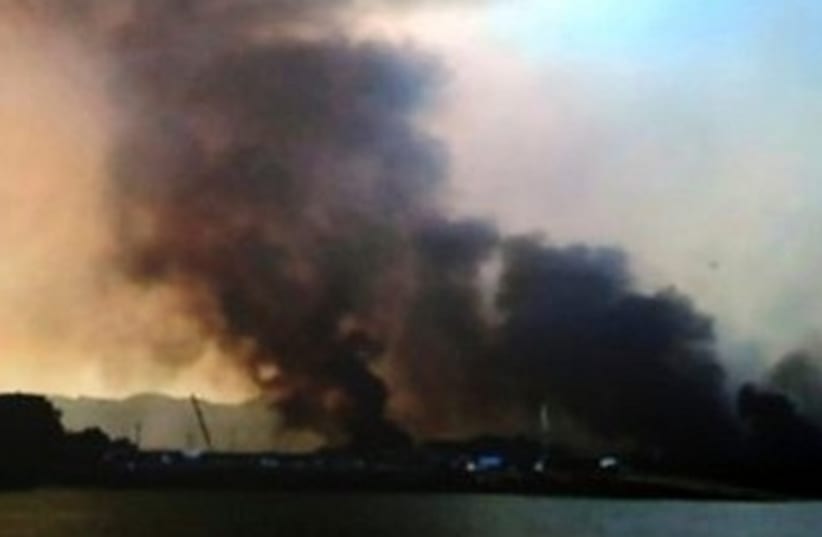
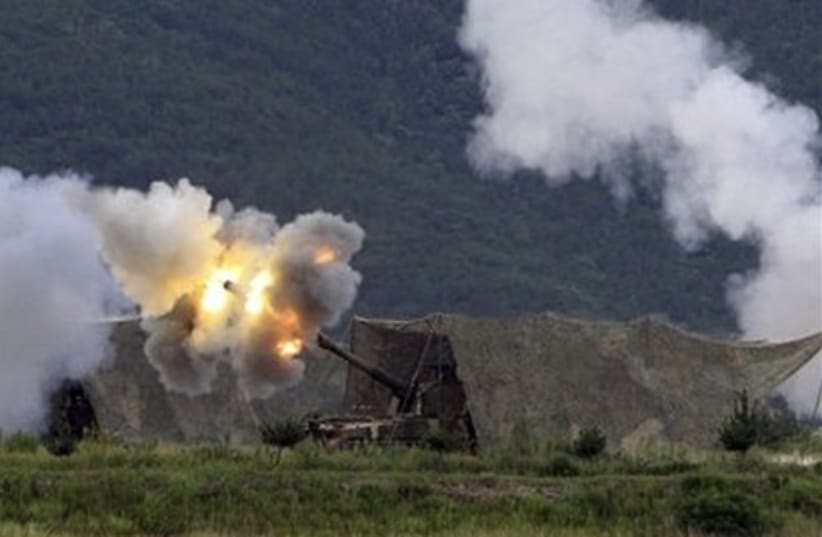
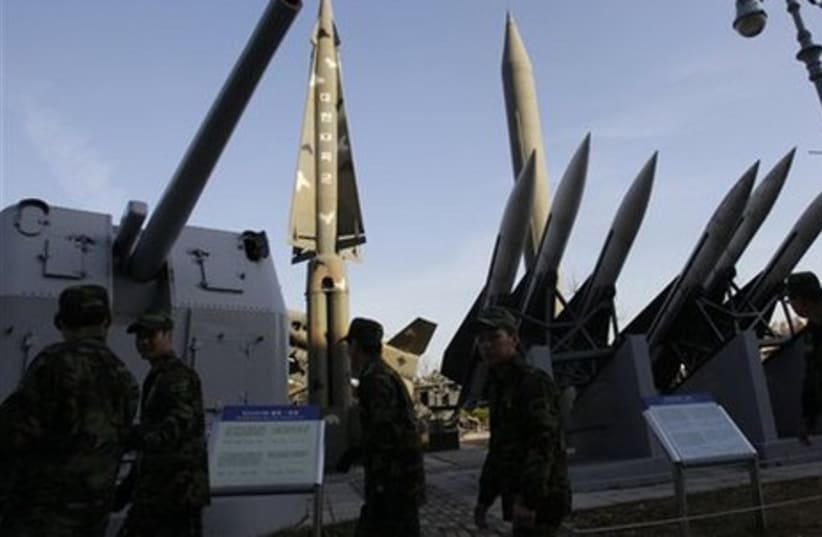


South Korea said it returned fire and scrambled fighter jets in response, and said the "inhumane" attack on civilian areas violated the 1953 armistice halting the Korean War. The two sides technically remain at war because a peace treaty was never negotiated.RELATED:US: N. Korea's nuke claim provocative, not surprise Mullen: N. Korea nuclear report shows belligerence The skirmish came amid high tension over North Korea's claim that it has a new uranium enrichment facility and just six weeks after North Korean leader Kim Jong Il unveiled his youngest son Kim Jong Un as his heir apparent.
The North's artillery struck the small South Korean-held island of Yeonpyeong, which houses military installations and a small civilian population and which has been the focus of two previous deadly battles between the Koreas.Two South Korean marines were killed, three were seriously wounded and 10 slightly wounded, a Joint Chiefs of Staff official said. Island residents were escaping to about 20 shelters in the island while sporadic shelling continued, the military official said.The firing came amid South Korean military drills in the area. North Korea's military had sent a message to South Korea's armed forces early Tuesday to demand that the drills stop, but the South continued them, another military official said.During the drills, South Korean marines on the island shot artillery toward southern waters, away from North Korea, the official said.Both officials spoke on condition of anonymity, citing military rules.The North's premeditated bombardments struck civilian areas and were "inhumane atrocities," military official Lee Hong-ki said. There are about 30 small islands around the Yeonpyeong, and tension runs high in the area because of its proximity to North Korea. Yeonpyeong is known for its crab fishing.After the North's barrages, South Korea responded by firing K-9 155mm self-propelled howitzers, military officials said, but declined to say whether North Korean territory was hit.YTN TV said several houses on Yeonpyeong were on fire and that shells were still falling on the island, which is about 75 miles (120 kilometers) west of the coast. The station broadcast pictures of thick columns of black smoke rising from the island, which has a population of 1,200 to 1,300. Screams and chaotic shouts could be heard on the video.Lee Chun-ok, a 54-year-old island resident, said she was watching TV when she heard sounds of artillery and a wall and door in her home suddenly collapsed."I though I would die," Lee said from the port city of Incheon, west of Seoul, where she evacuated. "I was really, really terrified, and I'm still terrified."Relations between the divided Koreas sank to their lowest point in years after the deadly sinking in March of a South Korean warship near the tense Korean sea border, which killed 46 sailors. Seoul blamed a North Korean torpedo, while Pyongyang has denied any responsibility.President Lee Myung-bak ordered officials to "sternly respond" to North Korea's action but also called on officials to make sure that the "situation would not escalate," according to a presidential official. He asked not to be identified, citing the issue's sensitivity.Lee was holding a security meeting in a presidential situation room, the official said.The United States called on North Korea to "halt its belligerent belligerent action," Press Secretary Robert Gibbs said in Washington. He said the United States is "firmly committed" to South Korea's defense, and to the "maintenance of regional peace and stability."China, which is the North's economic and political benefactor while maintaining robust commercial ties with the South, called for calm."We express our concern over the situation. The situation is to be verified," Chinese Foreign Ministry spokesman Hong Lei said at a regularly scheduled media briefing in Beijing. He called on both Koreas without naming them "to do more to contribute to peace and stability on the peninsula."In a message to North Korea's armed forces, South Korea's military urged the North to stop provocations and warned of strong measures unless the North stopped, a Joint Chiefs of Staff official said.The countries' western maritime boundary has long been a flash point between the two Koreas. The North does not recognize the border that was unilaterally drawn by the United Nations at the close of the 1950-53 Korean War.North and South Korea have fought three bloody skirmishes near the maritime border in recent years, most recently in November 2009. That battle left one North Korean officer dead and three others wounded, according to South Korean officials.Two deadly clashes have previously erupted around Yeonpyeong. In a gunbattle in June 2002, one South Korean warship sank, killing six sailors. The North said it also suffered casualties, but didn't confirm how many. In a 1999 clash, South Korea said several sailors were wounded, and that up to 30 North Koreans died.In a sign of North Korea's anger over the South Korean drills, North Korea's state news agency said in a dispatch Monday that South Korea was readying war games with the United States for aggressive purposes against North Korea. The dispatch quoted what it said were sympathetic Swiss groups that called the drills "a criminal act of aggression for provoking another Korean war."The existence of North Korea's new uranium enrichment facility came to light over the weekend after Pyongyang showed it to a visiting American nuclear scientist, claiming that the highly sophisticated operation had 2,000 completed centrifuges. Top U.S. military officials warn that it could speed the North's ability to make and deliver viable nuclear weapons.The military tensions between the two Koreas also comes amid a visit to the region by U.S. special envoy on North Korea, Stephen Bosworth. He held talks with South Korean officials Monday and was also scheduled to meet officials in China.